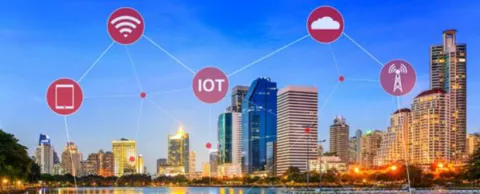
Where are we at with smart buildings?
With a world-leading green building industry firmly grounded in Australia, I felt this question about smart buildings was timely. And to unpack it a little, I approached green building stalwart Quentin Jackson, Sustainable Design Leader in Queensland for our SSCANZ's member company Aurecon. His challenge was to help me understand where the industry is at with 'smart' and what the likely intersections are with the green building agenda. Here’s my four questions to Jackson, along with his responses.
Beck: Question1: You have been immersed in the green buildings world since its inception (circa 2003), what's your response when I say the smart building revolution is coming?
Jackson: Well, smart buildings have been here for a while, performing tasks such as metering resource consumption (eg. energy and water) and the like, however only recently have we been able to do it seamlessly, thanks to smarter technology, and analytics platforms.
Green Star has helped make sure the building can do something, like reduce greenhouse gas emissions, but only now can we activate the building through data analytics platforms and emerging artificial intelligence technology. Analysing data in real time, to have a substantial difference, is where its at in smart buildings. Our buildings are starting to learn, turning themselves on and off automatically, and this is just the start!
Beck: Question 2: Give me five words that describe a smart building?
Jackson: I’ll give you four - artificially intelligent, emotionally intelligent, seamlessly integrated, and environmental.
Beck: Question 3: What's your favourite building in the world, and why?
Jackson: I don’t have one favourite building, there are many. But what they all have in common is their connection to nature, somehow. A focus on natural space, atriums, components that connect with the outdoors. And I love buildings that make it feel like home – a veranda, to sit and think.
Beck: Question 4: What's your prediction for smart buildings over the next 5 years?
Jackson: Firstly, the link between building performance, people performance, and business performance will be better articulated, because we are getting better at understanding the data, instantaneously. Artificial intelligence will take this even further, by helping buildings respond naturally to people, knowing how you occupy the building and responding to your needs. The Edge (in Amsterdam) is a good example of this.
Sensing will become more than sensing, and by this, I mean seeing things we cannot usually see, for example carbon monoxide and other indoor pollutants. This will be made possible by combining the intelligence gathered from data, and highlighting the relevant impact (or benefit) for people occupying the building. Having this situational awareness will ultimately enable us to respond to it in the best possible way. The 'connectivity' between people and the building will continue to merge closer together.
And finally, smart buildings of the future will be connected within precincts, allowing buildings to talk to each other and work together for the best possible environmental and social outcomes. A smart building is what that works with a team of buildings, not in isolation, bringing economies of scale, trading off of each other, and sharing knowledge and resources.



